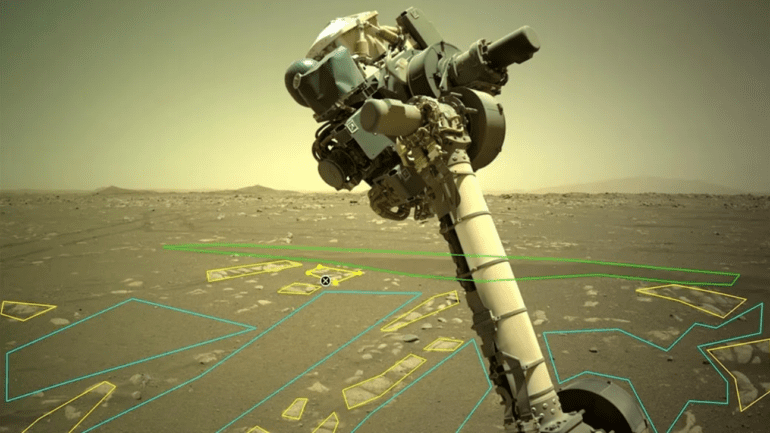TL;DR:
- Cutting-edge AI can detect signs of life with 90% accuracy, even in ancient samples.
- It can be embedded in robotic space explorers for lunar, Martian, and celestial body missions.
- This AI distinguishes between biomolecules and non-biological compounds.
- Initial training included 134 samples, accurately identifying biotic and abiotic materials.
- Potential impact on reevaluating Earth’s history and the existence of ancient life.
- The research was published in Proceedings of the National Academy of Sciences.
Main AI News:
Can machines discern the existence of life on distant celestial bodies? The answer is a resounding yes, thanks to an extraordinary development in artificial intelligence (AI). Current space exploration missions equipped with cutting-edge sensors can already identify molecules that may suggest the presence of alien life. However, these molecules are notorious for degrading over time, rendering their detection a formidable challenge for today’s technology.
Enter a game-changing AI methodology that can discern subtle variations in molecular patterns indicative of biological activity, even in specimens that are hundreds of millions of years old. Astonishingly, this pioneering mechanism boasts an impressive accuracy rate of 90%, as reported by groundbreaking research.
The potential applications of this AI system are truly cosmic. Researchers envision embedding this technology in sophisticated sensors integrated into robotic space explorers, encompassing lunar and Martian landers, as well as rovers. Moreover, these sensors could be deployed on spacecraft orbiting promising celestial bodies such as Enceladus and Europa, opening new frontiers in our quest to explore habitable worlds.
“We began with the idea that the chemistry of life differs fundamentally from that of the inanimate world; that there are ‘chemical rules of life’ that influence the diversity and distribution of biomolecules,” stated Robert Hazen, a scientist at the Carnegie Institution for Science in Washington D.C. and co-author of the groundbreaking study. “If we could deduce those rules, we can use them to guide our efforts to model life’s origins or to detect subtle signs of life on other worlds.”
The heart of this innovative approach lies in recognizing that the chemical processes governing the formation and functioning of biomolecules are fundamentally distinct from those of non-biological molecules. Biomolecules, such as amino acids, retain vital information about their chemical origins—a principle likely applicable to extraterrestrial life forms. These unique chemical distinctions become discernible and quantifiable through the power of AI.
The AI algorithm’s initial training involved 134 samples, comprising 59 biotic and 75 abiotic specimens. To validate its effectiveness, the data was randomly divided into a training set and a test set. The results were nothing short of remarkable. The AI method accurately identified biotic samples, including shells, teeth, bones, rice, human hair, and ancient life preserved in fossilized fragments like coal, oil, and amber. Impressively, it also identified abiotic samples, such as laboratory-created amino acids and carbon-rich meteorites.
Almost immediately, this breakthrough AI method has the potential to revolutionize our understanding of Earth’s history. Researchers are eager to employ it in the examination of the 3.5 billion-year-old rocks in the Pilbara region of Western Australia, believed to contain the world’s oldest fossils. These rocks, initially discovered in 1993, were thought to be remnants of ancient microbes akin to cyanobacteria, which played a pivotal role in oxygen production on Earth. If confirmed, this discovery could signify that our planet supported thriving life far earlier than previously imagined. Yet, skepticism remains due to the possibility of geological processes masquerading as evidence. Could AI hold the key to resolving this scientific enigma?
Conclusion:
The breakthrough AI technology’s remarkable ability to detect signs of life, even in ancient samples, opens new frontiers in space exploration and astrobiology. By embedding this AI system in sensors for future missions, the market can anticipate significant advancements in our ability to search for extraterrestrial life and understand the origins of life on Earth. This innovation has the potential to revolutionize the space technology market, driving demand for AI-integrated systems and fostering exciting discoveries beyond our planet.

